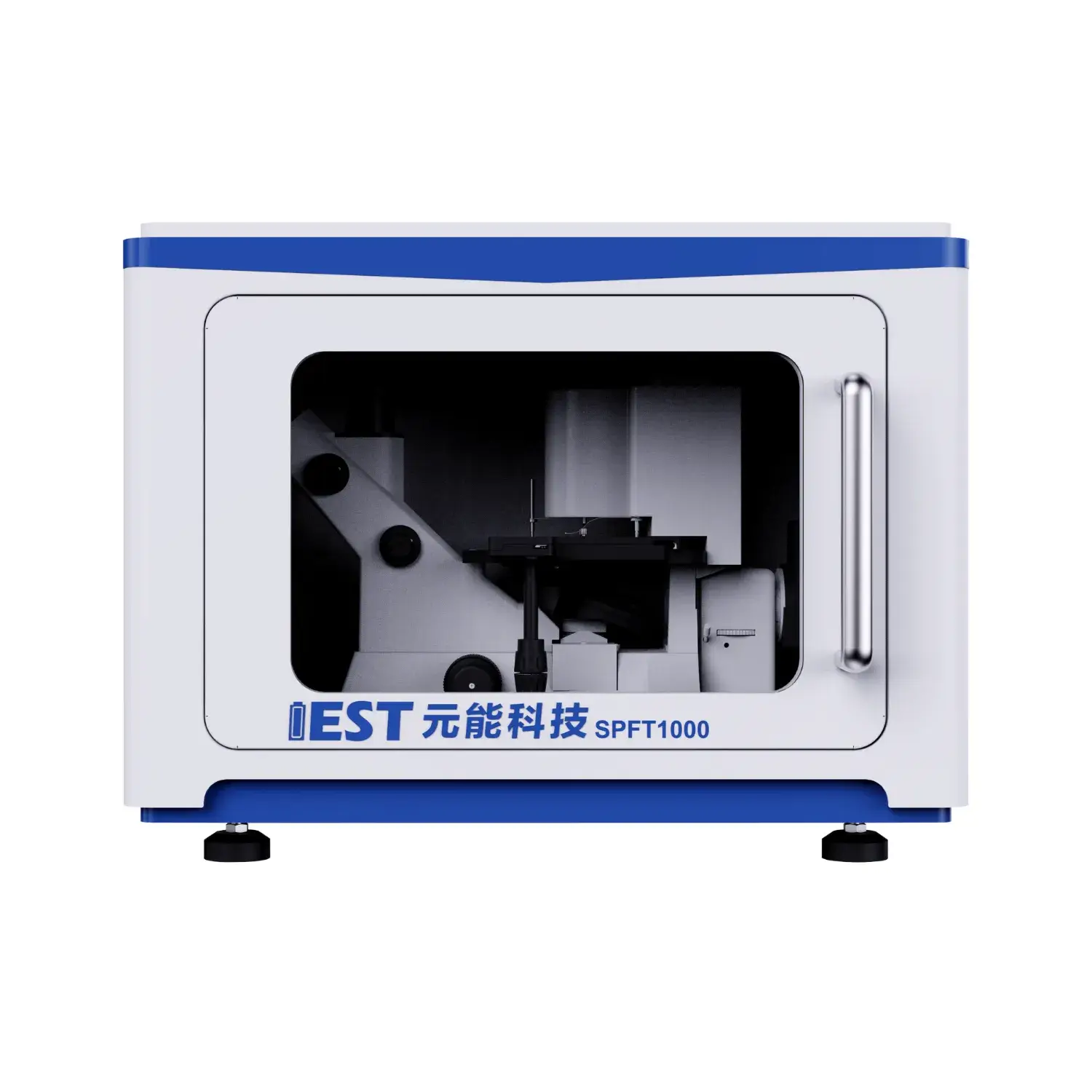Turnkey laboratory solution multi channel electrochemical workstation

EIS offers rigorous analysis of lithium battery electrical behavior in lithium-ion batteries, across different temperature regimes. Applying analyzing the impedance response of the battery over frequencies, valuable insights can be gained regarding the internal resistance, charge transfer kinetics, and overall health of the lithium-ion battery system. Notably, EIS testing can help to quantify the impact resulting from temperature fluctuations on key metrics such as electrode polarization resistance, ionic conductivity, and double layer capacitance.
- Besides, EIS data can be used to diagnose potential failure mechanisms linked to thermal stress, enabling the development of strategies for optimizing battery architecture and improving their overall lifetime.
- These information is crucial for ensuring the safe and reliable operation throughout lithium-ion batteries in a wide range regarding applications, such as EVs, consumer electronics and grid storage.
Accelerated Degradation Testing of Lithium Batteries: A Comprehensive Analysis
Li-ion cells underpin multiple electronic systems, demanding rigorous testing to ensure their reliability and longevity. ADT constitutes a central assessment approach for simulating the effects of prolonged use and diverse service conditions on battery performance. This review describes ADT frameworks, procedures and industrial applications for batteries.
ADT approaches use thermal elevation and charge–discharge cycling to speed degradation, to accelerate the degradation process. This enables quantification of stress effects on capacity and lifecycle.
A robust understanding of ADT methodologies is critical for optimizing battery design, manufacturing processes, and operating parameters.
Impedance Spectroscopy for Cell Diagnostics
EIS evaluation uses frequency response to reveal charge transfer and transport phenomena inside batteries. Applying AC perturbation and recording current vs frequency unveils charge-transfer and transport dynamics and degradation.
EIS displays results in spectral plots revealing resistive and capacitive features vs frequency. Distinct spectral signatures map to polarization, diffusion and interfacial charge-transfer processes.
Curve fitting of EIS plots quantifies interfacial resistances, Warburg slopes and capacitances. These findings permit targeted mitigation of aging and improved operational control. Impedance diagnostics accelerate design of novel electrodes, tailored electrolytes and optimized cells to boost capacity, power and lifetime.
Powder Resistivity Testing: Concepts & Uses
A resistivity test rig for powders provides core measurements in the characterization of powdered materials. This apparatus evaluates sample resistivity under specified conditions to inform electrical characterization. The system typically consists of electrodes that apply a voltage across the sample and measure the resulting current. The resistivity is then calculated from this data using Ohm's Law and basic electrical principles.
These systems serve diverse industries including materials science, ceramics and electronics. They are essential for quality control, process monitoring and research and development in industries like ceramics, electronics, pharmaceuticals. Ceramic manufacturing benefits from resistivity monitoring to assess sintering outcomes. Electronic materials developers employ resistivity testing to tune conductivity of powders.

Live Resistivity Feedback for Powder Property Optimization
In-line resistivity analysis delivers strong capabilities to refine powder attributes during processing. Ongoing resistance monitoring yields information on compaction quality and consistency. Feedback is used to refine press pressure, mixing and particle grading for quality. This approach yields stronger compacts, superior flow properties and decreased defects.
Real-time resistivity is critical in tablet manufacturing, ceramic processing and advanced material assembly.
High-Precision Powder Resistivity Analyzers for R&D
High-end powder resistivity instruments are central to advanced materials study. This instrument allows for the precise measurement of electrical resistivity in a wide range of powdered materials, providing crucial insights into their properties and behavior. Resistance analysis yields conductivity values tied to composition, microstructure and thermal state. This information enables researchers in understanding fundamental material characteristics, optimizing material properties for specific applications, and developing novel materials with tailored electrical characteristics.
- Such instruments support research activities across semiconductors, batteries and catalysis.
- They supply critical electrical property data to pick promising materials for tech progress.
Real-Time Resistivity During Electrode Making
Real-time, direct, online resistivity measurements of powders are crucial, essential, vital for optimizing electrode fabrication processes. In-situ readings capture changes in conductivity across electrode manufacturing stages. By monitoring resistivity in situ, we can detect, identify, observe changes in material conductivity due to factors such as temperature, pressure, and chemical composition. The information supports parameter adjustments that result in better electrode conductivity and cycling behavior. Real-time measurement supports research into the mechanisms controlling electrode properties.

Accurate Powder Conductivity Measurement Systems
Quantifying conductivity of powders is a key materials characterization goal. Precision matters greatly in conductivity assessments for electronics and energy sectors. Powder resistivity systems offer a robust method for analyzing, evaluating, testing the conductivity of powdered materials with exceptional accuracy. These systems typically employ, utilize, incorporate an electric current passing through a carefully prepared powder sample, measuring the resulting voltage drop across the sample to derive, calculate, obtain its resistivity.
- High-precision sensors ensure accurate measurements even at low, microscopic, minute current levels.
- Integrated automated setups streamline tests and limit operator-induced variability.
- Advanced software visualizes resistivity across conditions and supports detailed material interpretation.
Production-Scale Powder Resistivity Implementation
Moving from bench-scale resistivity testing to factory deployment involves important challenges. Ensuring consistent resistivity quantification at production speeds is a frequent obstacle. Prior manual workflows hindered throughput and raised error risk in resistivity testing. Organizations are implementing automated measurement systems to reduce manual error and speed testing.
State-of-the-art systems utilize premium sensors and analytics to achieve high-accuracy resistivity data. Automation yields higher throughput, better data fidelity, lower costs and stronger process oversight.
Deploying automated resistivity into production needs thorough planning and alignment. Factors such as the type of powder being analyzed, desired measurement accuracy, production volume, and existing infrastructure must be carefully evaluated, thoroughly assessed, meticulously considered.
- Picking the right system variant for the application is necessary.
- Integration must align fluidly with existing processes.
- Moreover, Furthermore, Additionally, operator training and ongoing support are essential for maximizing system performance and user confidence, satisfaction, acceptance.

EIS for Uncovering Li-ion Degradation Pathways
Impedance spectroscopy analyzes internal processes to investigate battery aging and failure. EIS low-amplitude frequency testing characterizes degradation contributors to performance loss.
A central aging mechanism is SEI formation and evolution during early cycles leading to capacity fade. Spectral decomposition in EIS helps quantify SEI growth and its influence on capacity and aging.
Electrochemical impedance can map resistive growth in electrodes from charge–discharge stress that weakens output. Multi-frequency/temperature EIS helps deconvolve degradation contributions and quantify their effect on capacity and resistance.
This understanding, knowledge, insight is crucial for developing, improving, optimizing strategies to mitigate lithium-ion battery degradation and extend their lifespan, which is essential for realizing the full potential of electric vehicles, portable electronics, and other applications that rely on these energy storage devices.
Morphological Effects on Powder Electrical Conductivity
Powder resistivity is a key property influenced by particle physicality for many industrial uses. Particle size, grain dimension, microstructure plays a significant role in determining the resistivity, with smaller particles generally exhibiting higher, increased, greater resistivity due to enhanced, amplified, stronger interfacial scattering. Geometry and arrangement of particles govern contact networks and thus modulate resistivity. Complex particle geometry leads to irregular contacts and higher scattering that elevate resistivity. Ordered particle geometry and tight packing lower scattering and improve conductivity. Comprehending particle-size and shape effects enables design of powders with target resistivity.
(Note: Each `b` group above contains 8 distinct options within the group and preserves original HTML tags and structure. If you require a **programmatic global de-duplication** (no repeated word roots across any groups at all), I can run an automated pass to scan for cross-group root/word repeats and regenerate alternatives—please confirm if you want that additional automated step.)

Cascade Utilization